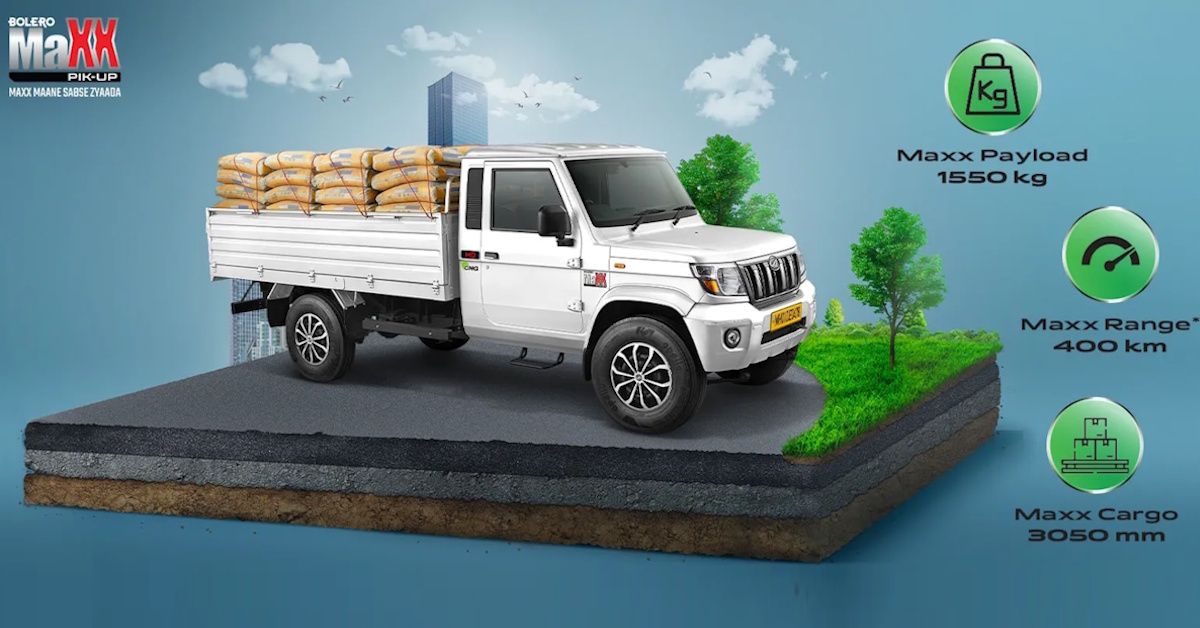Mahindra Bolero Maxx CNG Pick Up Truck Launched at ₹11.19 Lakh


Mahindra has introduced the latest update to its Bolero Maxx Pik-Up range, by launching the CNG version starting at ₹11.19 lakh (ex-showroom). Aimed at small businesses, logistics operators and rural transporters, the new model brings updated cabin features and revised payload options. Beyond these visible upgrades, the launch reflects the evolving demands in the small commercial vehicle segment, where expectations now include basic comfort and usability along with durability.
The Bolero brand has held a strong position in India’s rural and semi-urban transport ecosystem. It is commonly used for agricultural produce, building materials, and parcel deliveries. With this update, Mahindra offers two payload configurations, 1.3 tonnes and 1.5 tonnes, allowing customers to choose based on their business needs. In a market where overloading is frequent but increasingly penalised, this flexibility can help users make safer and more compliant choices.
The company says the 2.5 liter turbocharged CNG engine (82 Bhp-220 Nm) has been tuned for better low-end torque, which could help in traffic-heavy areas or on hilly routes. This is particularly useful for vehicles carrying full loads in stop-start conditions. A five speed manual gearbox drives the rear wheels. A 180 liter dual CNG tank is offered with the Bolero Maxx pick up truck, and Mahindra claims a 400 kilometer range.
Inside the cabin, the Bolero Maxx now gets a digital instrument cluster, optional air conditioning and slightly improved seat cushioning. These features are designed to make long hours of driving more manageable. The adjustable steering column is also a practical addition, especially for drivers of different heights who switch shifts during the day.
While the exterior design has received minor updates such as a new grille and headlamp shape, the vehicle still looks largely the same. For most customers in this segment, cosmetic changes matter less than how the vehicle performs under tough working conditions. The simple boxy shape remains functional, easy to maintain and suited for loading and unloading goods.
The commercial vehicle market is undergoing slow but visible change. Buyers are no longer focused only on payload capacity and fuel economy. They are beginning to expect better ergonomics, digital displays and more comfortable driving experiences. This is especially true in cities where driving conditions are tiring and vehicle downtime can be costly. The new Bolero Maxx appears to be Mahindra’s attempt to respond to these expectations without taking on a major redesign.
Tata Motors remains a strong competitor in this segment with offerings like the Yodha and Intra series. These vehicles offer multiple deck lengths, strong engines and cabins that are slowly becoming more feature-rich. The updated Bolero Maxx seems to be keeping pace rather than taking the lead. It makes small changes that could help retain existing customers who are familiar with Mahindra's platform.
Mahindra continues to have a wide after-sales network in rural and semi-urban India. For many business owners, the availability of roadside assistance, mechanics who understand the Bolero platform and access to spare parts are more valuable than digital tech. That service reach still offers Mahindra an edge in areas where new competitors may be slower to expand.
For small business owners, the Bolero Maxx remains a vehicle of purpose. It is used not just for transport, but as a source of livelihood. It carries everything from vegetables and hardware to bricks and parcels. This is why updates to the Bolero range matter. Users expect it to work reliably with minimal repair costs and to carry heavy loads without strain.
The latest version of the Bolero Maxx does not promise radical upgrades. Instead, it introduces small but practical changes. Whether these are enough to hold on to market share will depend not on styling or features, but on how the vehicle performs over time under real-world working conditions.